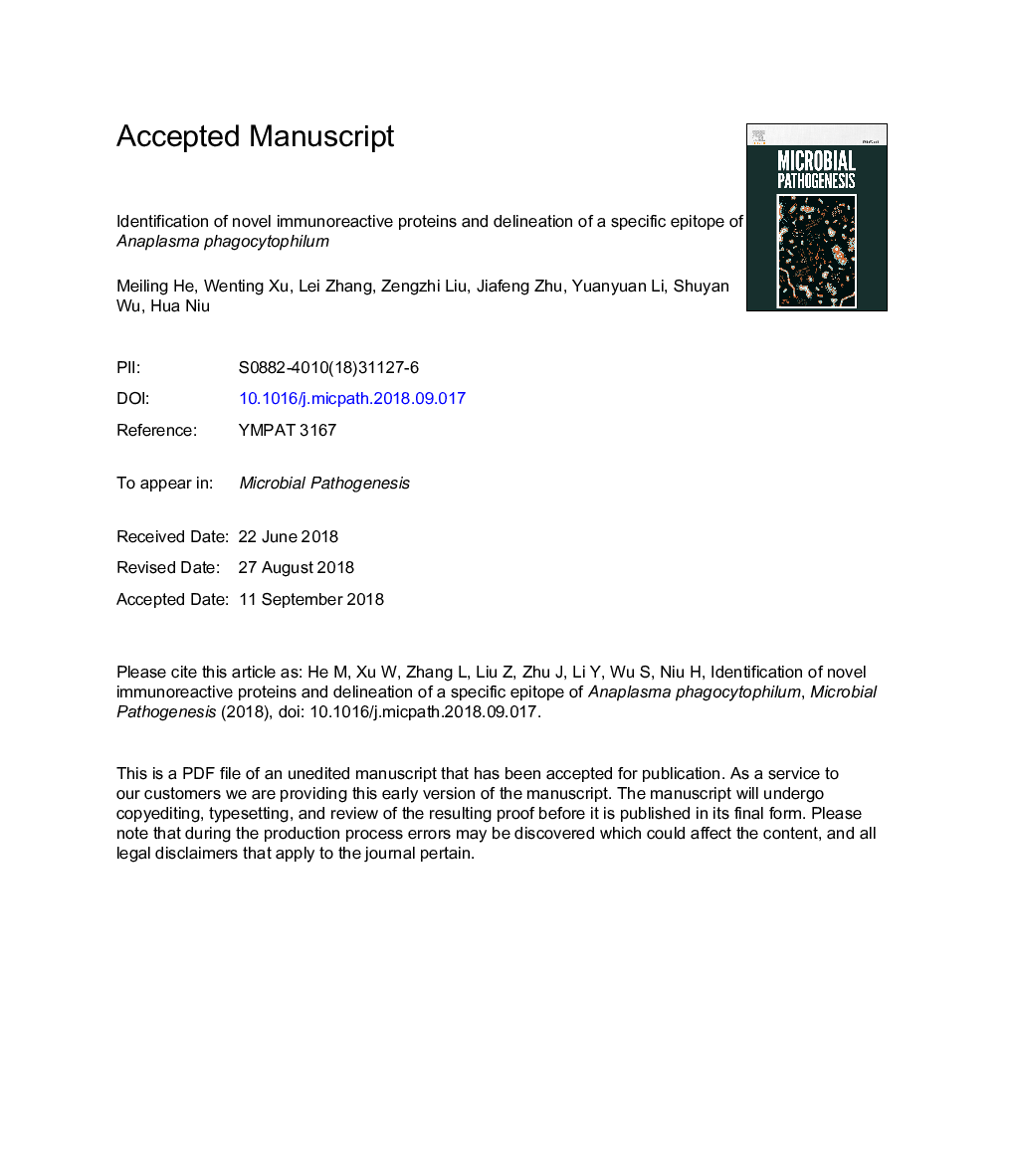| Article ID | Journal | Published Year | Pages | File Type |
|---|---|---|---|---|
| 10148726 | Microbial Pathogenesis | 2018 | 22 Pages |
Abstract
Human granulocytic anaplasmosis (HGA), an increasingly recognized febrile tick-borne illness, is caused by a gram-negative obligate intracellular bacterium Anaplasma phagocytophilum. Because of nonspecific clinical manifestations, diagnosis of HGA highly depends on laboratory tests. Identification of immunoreactive proteins is prerequisite for development of specific and sensitive immunoassays for HGA. In this study, we identified novel immunoreactive proteins of A. phagocytophilum. Previous studies indicated that secreted proteins of A. phagocytophilum and other bacteria can be immunoreactive antigens. Here we in silico screened A. phagocytophilum genome for encoding proteins which bear features of type IV secretion system substrates. Among seventy seven predicted proteins, fourteen proteins were determined for antigenicity and nine proteins were showed to be immunoreactive antigens. In addition, an APH1384 peptide harboring a B cell epitope predicted by bioinformatics was found specifically reacting with anti-A. phagocytophilum sera. Hereby, we identified novel immunoreactive proteins and delineated a specific epitope of A. phagocytophilum, which might be employed for HGA diagnosis.
Related Topics
Life Sciences
Immunology and Microbiology
Microbiology
Authors
Meiling He, Wenting Xu, Lei Zhang, Zengzhi Liu, Jiafeng Zhu, Yuanyuan Li, Shuyan Wu, Hua Niu,
